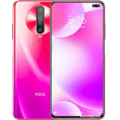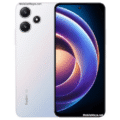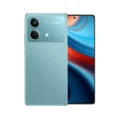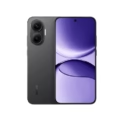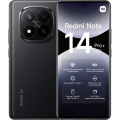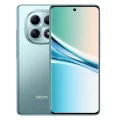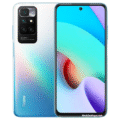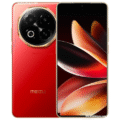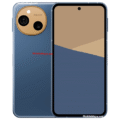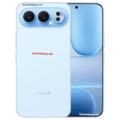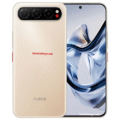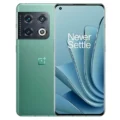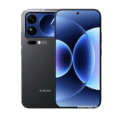Price List: Under Tk.5,000 | Tk.5001-10000 | Tk.10001-15000 | Tk.15001-20000 | Tk.20001-30000 | Tk.30001-40000 | More Mobiles
- Home
- All Mobile
- Xiaomi
- Xiaomi Redmi Pad 2
Xiaomi Redmi Pad 2
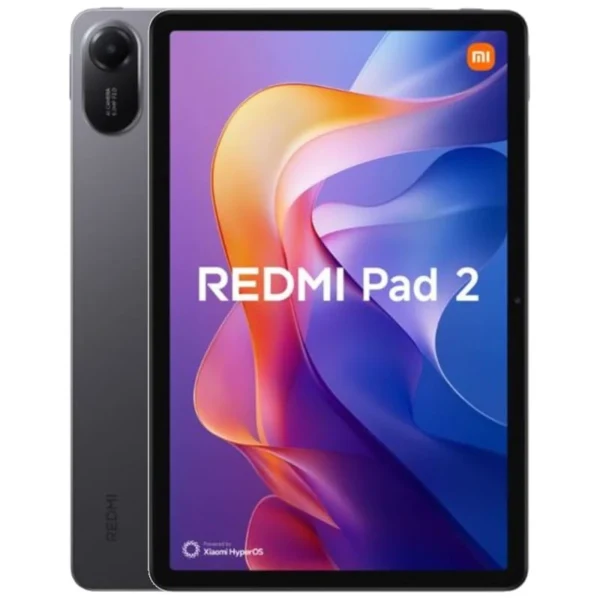


Specifications
Price in Bangladesh
| Expected Price | 35,000 |
General
| Device Type | Tablets |
| Model | 25040RP0AG |
| Announced | June, 2025 |
| Released | June, 2025 |
| Status | Available |
Hardware & Software
| Operating System OS => Every computer system run on a base software called Operating System (OS). Operating System controls all basic operations of the computer (such as smartphone, PDAs, tablet computers and other handheld devices). The Operating System allows the user to install and run third party applications (apps), apps are used to add new functionality to the device. | Android |
| OS Version | v15 |
| User Interface UI or user interface of a device is the look and feel of the on-screen menu system. How it works, its color scheme, how it responds to button presses, all of these things are part of the user interface. | HyperOS 2 |
| Chipset Chipset is a group of integrated circuits designed to perform one or a more dedicated functions, often with real time computing constraints, Popular smartphones are equipped with more advanced embedded chipsets that can do many different tasks depending on their programming. | Mediatek Helio G100 Ultra (6 nm) |
| CPU CPU (Central Processing Unit) mostly known as processors, CPU processes instructions in order to carry out certain functions that make your device operate properly. Processors are often described as the brain of computers, smartphones and tablets, Smartphones and tablets rely on processors to carry out their every task, Processors are an incredibly important factor in selecting any type of computing device, including your smartphone. | Octa-core (2x2.2 GHz Cortex-A76 & 6x2.0 GHz Cortex-A55) |
| GPU GPU (Graphics Processing Unit) is a single-chip processor designed to rapidly manipulate and alter memory to accelerate the creation of images in a frame buffer intended for output to a display, This includes things such as lighting effects, object transformations, and 3D motion. | Mali-G57 MC2 |
| RAM (Memory) RAM (Random Access Memory) is a type of computer memory that can be accessed randomly, any byte of memory can be accessed without touching the preceding bytes that allows information to be stored and accessed quickly from random locations. RAM is the most common type of memory found in computer systems, smartphones, tablets and other electronic devices. | 4 GB, 6 GB, 8 GB |
Design
| Dimensions | 254.6 x 166 x 7.4 mm (10.02 x 6.54 x 0.29 in) |
| Weight | 510 g or 519 g (1.12 lb) |
| Colors |
Graphite Gray, Mint Green, Lavender Purple |
| Build Material | Glass front, aluminum frame |
Display
| Display Type Display Technology => A number of display technologies and types used in mobile phones => TFT (Thin Film Transistor), IPS (In-Place Switching), OLED (Organic Light Emitting Diode), AMOLED (Active-Matrix Organic Light-Emitting Diode), Super AMOLED (an even advanced version of AMOLED), Resistive Touchscreen (Resistive touchscreens contain two layer of conductive material with a very small gap between them which acts as a resistance), Capacitive Touchsceen (Capacitive touchscreen technology consists of a layer of glass coated with a transparent conductor) | IPS LCD |
| Size | 11.0 inches, 350.9 cm2 (~83.0% screen-to-body ratio) |
| Resolution | 1600 x 2560 pixels, 16:10 ratio (~274 ppi density) |
| Brightness | 600 nits |
| Refresh Rate | 90Hz |
| HDR 10 / HDR+ support |
Rear Camera
| Camera Setup | Single |
| Main Camera | 8 MP |
| OIS | |
| Video | 1080p@30fps |
Front Camera
| Camera Setup | Single |
| Secondary |
5 MP, f/2.2, (wide), 1/5.0", 1.12µm |
| Video | 1080p@30fps |
Battery
| Battery Type Battery Type => Cell phones run on various kinds of batteries depending on the manufacturer, phone size or shape and features. There are basically four types of cell phone batteries => Lithium Polymer, Lithium Ion, Nickel Metal Hydride and Nickel Cadmium. | Li-Ion (Lithium Ion) |
| Placement | Non-removable |
| Capacity Battery Capacity is a measure (typically in Amp-hr) of the charge stored by the battery, and is determined by the mass of active material contained in the battery. The battery capacity represents the maximum amount of energy that can be extracted from the battery under certain conditions. | 9000 mAh |
| Quick Charging | 18W wired, PD2, QC2.0 |
Storage
| Storage Capacity | 128 GB, 256 GB |
| USB OTG |
Network
| 2G Network |
GSM 850 / 900 / 1800 / 1900 - cellular model only |
| 3G Network |
HSDPA 800 / 850 / 900 / 1700(AWS) / 1900 / 2100 - cellular model only |
| 4G Network |
1, 2, 3, 4, 5, 7, 8, 13, 18, 19, 20, 26, 28, 38, 40, 41, 66 - cellular model only |
| SIM SIM (Subscriber Identity Module) is a small card that contains mobile network subscriber's account information. This allows the phone using the card to attach to a mobile network. The SIM card is most commonly associated with GSM and UMTS mobile networks. Moving a SIM card from one phone to another allows a subscriber to switch mobile phones without having to contact their mobile network carrier. SIM cards can also be used by a phone to store limited amounts of data, such as phone numbers and text messages. | Standard SIM |
Data
| GPRS GPRS (General Packet Radio Service) is a packet oriented mobile data service on the 2G and 3G cellular communication system's global system for mobile communications (GSM), Generally, GPRS is used for the purpose of wireless data transfer, such as sharing pictures and videos or browsing the Internet via a mobile phone connection. | |
| EDGE EDGE (Enhanced Data GSM Environment) is a wireless network technology generally considered the next step in the 2G network offers data transfer rates up to four times faster than ordinary GSM networks, Generally, EDGE is used for the purpose of wireless data transfer, such as sharing pictures and videos or browsing the Internet via a mobile phone connection. | |
| Speed | HSPA, LTE - cellular model only |
| Web Browser Web Browser => a web browser is a software application used to locate, retrieve and display content on the World Wide Web, including Web pages, images, video and other files, The primary function of a web browser is to render HTML, the code used to design or markup webpages. | HTML5 |
Messaging
| SMS SMS (Short Messaging Service) is a text messaging service component of phone, Web, or mobile communication systems. It uses standardized communications protocols to allow mobile phone devices to exchange short text messages over the networks. | Yes |
| MMS MMS (Multimedia Messaging Service) is a standard way to send messages that include multimedia content (audio clips, video clips and images) to and from mobile phones over wireless networks using the WAP protocol. | |
| Email Email (Electronic Mail) is a system for receiving, sending, and storing electronic messages, Similar to a letter, email is text messages that may contain files, images, or other attachments sent via the internet to a recipient by using applications and software prograps. An email address is required to receive email, and that address is unique to the user. | Yes |
| IM IM (Instant Messaging) is an exchange of text messages through a software application, it enable you to create a kind of private chat room with another individual in order to communicate in real time over the Internet. | Yes |
Connectivity
| Bluetooth Bluetooth is a wireless communications technology for exchanging data between mobile phones, headsets, computers and other network devices over short distances without wires, Bluetooth technology was primarily designed to support simple wireless networking of personal consumer devices. | 5.3, A2DP, LE |
| Wi-fi Hotspot | |
| Infrared Infrared connectivity is an old wireless technology used to connect two electronic devices. It uses a beam of infrared light to transmit information and so requires direct line of sight and operates only at close range. | |
| USB | USB Type-C, OTG |
| GPS GPS The Global Positioning System is a satellite-based radio navigation system, GPS permits users to determine their position, velocity and the time 24 hours a day, in all weather, anywhere in the world, In order to locate your position, your device or GPS receiver must have a clear view of the sky. | GPS, GALILEO, GLONASS, BDS, QZSS (cellular model only) |
| NFC NFC (Near field communication) is a set of standards for smartphones and similar devices to establish peer-to-peer radio communications with each other by touching them together or bringing them into proximity, usually no more than a few inches. |
Media
| FM Radio | No |
| Loudspeaker | Yes, with stereo speakers (4 speakers) |
| 3.5mm Jack | No |
Sensors & Security
| Fingerprint Sensor |
More
| Made By | China |
Performance Tests
Xiaomi Redmi Pad 2 Price in Bangladesh
The Xiaomi Redmi Pad 2 is priced at ৳35,000 in Bangladesh for its base variant, which comes with 128GB of storage. A higher storage option with 256GB is also available. This budget-friendly tablet strikes a balance between performance, entertainment, and battery life—making it a great pick for students, casual users, and multimedia lovers alike.
Launched in June 2025, the Redmi Pad 2 features a large 11-inch 2.5K display, a massive 9000mAh battery, and runs on the latest Android 15 with HyperOS 2. Despite being a budget tablet, it stands out with stereo speakers, a solid build, and a sleek aluminum frame. It’s not a flagship by design, but it does pack impressive value for the price.
Xiaomi Redmi Pad 2 Specifications
Display and Design
The Redmi Pad 2 features a vibrant 11.0-inch IPS LCD display with a 1600 x 2560 pixel resolution, delivering a sharp viewing experience with a 274 ppi density. With a 90Hz refresh rate and up to 600 nits of brightness, it ensures smoother scrolling and decent visibility even in bright environments.
Design-wise, the tablet sports a premium look with a glass front and an aluminum frame, giving it a sturdy yet sleek profile. At just 7.4 mm thin and weighing around 510–519 grams, it feels comfortable in hand. It’s available in attractive colors like Graphite Gray, Mint Green, and Lavender Purple.
Performance and Processor
Under the hood, the Redmi Pad 2 runs on the MediaTek Helio G100 Ultra (6nm) chipset—optimized for both power and efficiency. The octa-core CPU (2×2.2 GHz Cortex-A76 & 6×2.0 GHz Cortex-A55) and Mali-G57 MC2 GPU ensure decent performance for daily multitasking, video streaming, and casual gaming.
Available in 4GB, 6GB, and 8GB RAM configurations, along with 128GB or 256GB internal storage, this tablet supports USB OTG, though there’s no mention of microSD card support for expandable storage. For the price, it offers commendable multitasking capabilities and lag-free media consumption.
Camera and Video
The Redmi Pad 2 comes with a single 8MP rear camera capable of 1080p video recording at 30fps. While not designed for professional photography, it’s sufficient for document scanning, casual shots, or video calling.
On the front, there’s a 5MP wide-angle camera (f/2.2) that also supports 1080p@30fps video recording—perfect for online meetings, virtual classes, and selfies. Though basic, both cameras are well-optimized for a tablet in this range.
Battery and Charging
Powering the device is a massive 9000mAh Li-Ion battery, which provides extended usage—ideal for binge-watching, reading, or working on-the-go. The tablet supports 18W fast charging and is compatible with PD2 and QC2.0 standards.
While the charging speed isn’t groundbreaking, the sheer battery size ensures that you’ll rarely need to recharge it more than once a day with average use.
Connectivity and 5G Support
The Redmi Pad 2 (cellular model) supports 2G, 3G, and 4G LTE networks across a wide range of global bands, ensuring solid coverage. It uses a standard SIM slot.
For wireless connectivity, it offers:
- Bluetooth 5.3 (A2DP, LE)
- Dual-band Wi-Fi and Wi-Fi Hotspot support
- USB Type-C with OTG
- GPS, GLONASS, GALILEO, BDS, and QZSS (cellular model only)
Notably, 5G and NFC are not available—expected in this price range.
Additional Features
- Operating System: Android 15 with HyperOS 2—Xiaomi’s latest custom UI that enhances speed and usability.
- Speakers: Quad stereo speakers for immersive sound—great for watching movies or gaming.
- 3.5mm Jack: Not included—wireless audio or USB-C headphones are required.
- Sensors: No fingerprint sensor or Face ID mentioned.
- Build: Made in China with a focus on durability and aesthetics.
Reason to Buy
Here are some solid reasons why the Xiaomi Redmi Pad 2 is worth considering:
- Large 11-inch 2.5K display with 90Hz refresh rate
- Huge 9000mAh battery for extended usage
- Smooth performance with Helio G100 Ultra chipset
- Runs latest Android 15 with HyperOS 2
- Great for students, readers, and binge-watchers
- Stereo speakers enhance multimedia experience
- Available in 128GB and 256GB variants with up to 8GB RAM
Verdict
The Xiaomi Redmi Pad 2 is a well-rounded budget tablet that offers more than you’d expect for its price. From its vibrant display and powerful battery to its clean Android 15 experience, it ticks many of the right boxes for students, casual users, and entertainment lovers. While it doesn’t include premium features like 5G or advanced camera tech, it excels where it matters most—performance, display, and battery.
Whether you’re working, studying, or just relaxing with your favorite shows, this tablet provides great value at ৳35,000.
FAQ
Q1: Is Xiaomi Redmi Pad 2 good for gaming?
Yes, it can handle casual to mid-level gaming thanks to the Helio G100 Ultra chipset and Mali-G57 GPU, though it’s not ideal for high-end titles.
Q2: Does it support fast charging?
Yes, it supports 18W wired fast charging with PD2 and QC2.0.
Q3: Can I use this tablet for online classes or meetings?
Absolutely! With its 5MP front camera, stereo speakers, and large display, it’s perfect for Zoom, Google Meet, and other virtual platforms.
Q4: Does it have a headphone jack?
No, the Redmi Pad 2 does not include a 3.5mm headphone jack.
Q5: Is there cellular support available?
Yes, but only in the cellular model, which supports 2G/3G/4G networks.
User Reviews
Disclaimer Note
We do not guarantee that the information of this page is 100% accurate and up to date.

